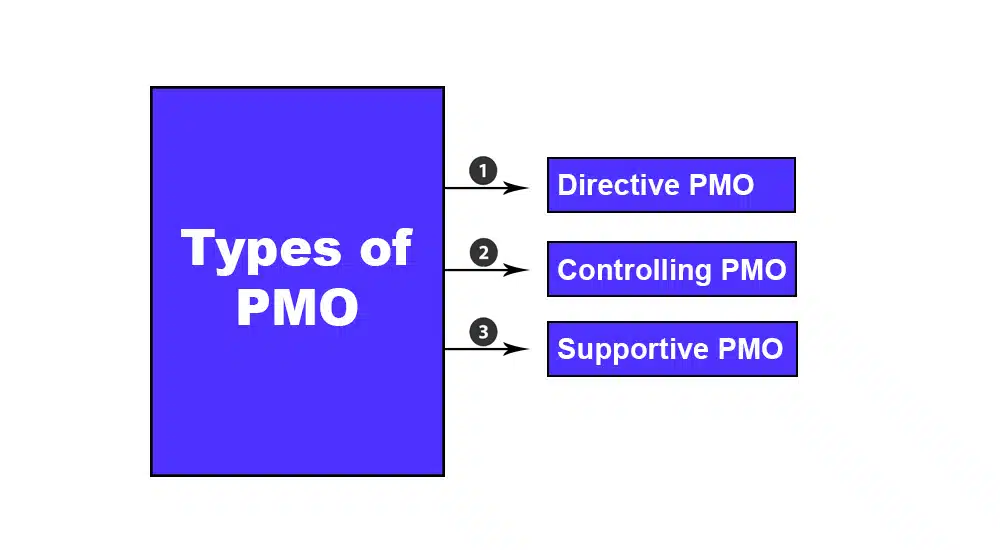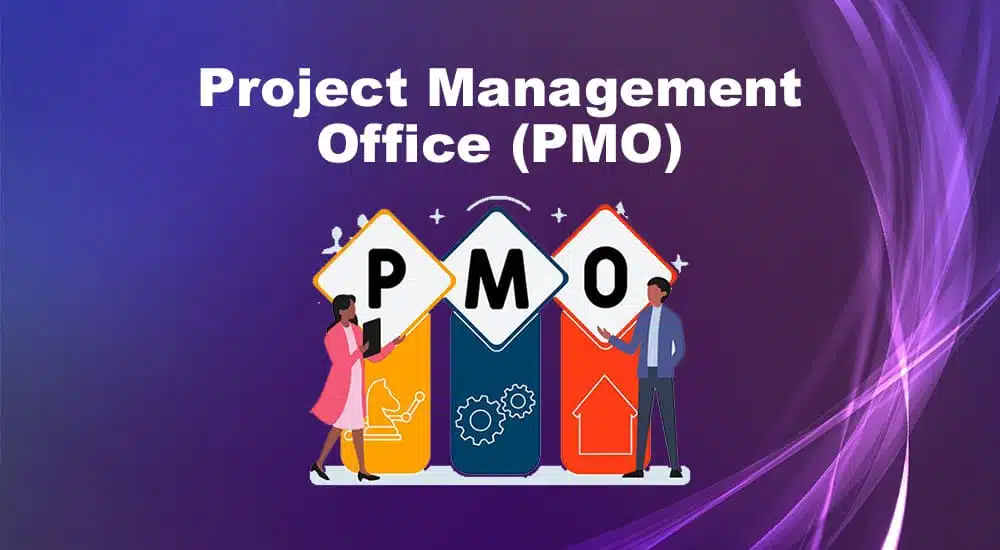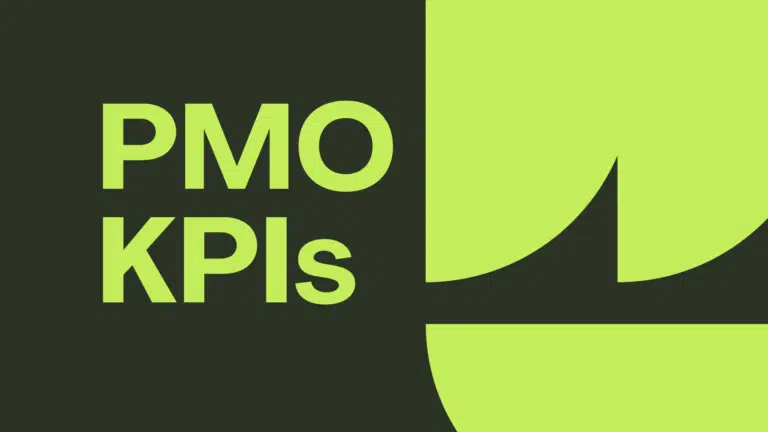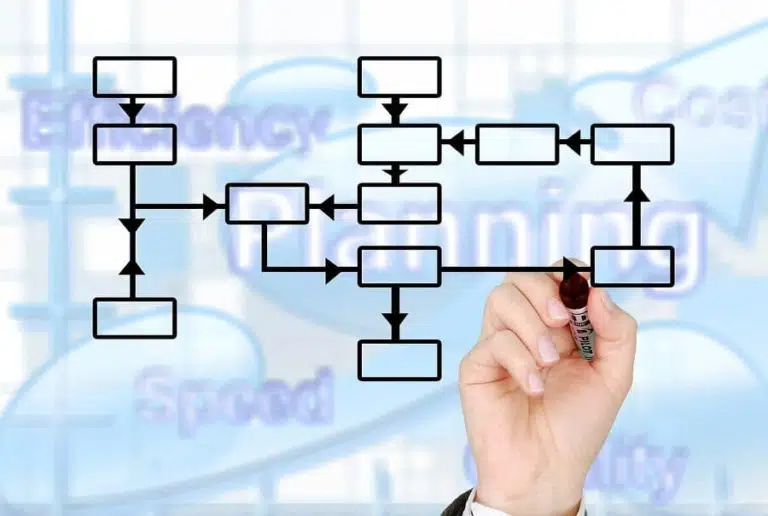Over 70% of organizations have a Project Management Office (PMO). This figure has been consistent for a few years but is expected to increase.
Organizations recognize the importance of the Project Management Office (PMO) because of its immense benefits, such as increased knowledge, better utilization of resources, and return on investment.
Today’s blog post will discuss the PMO, its definition, meaning, structure, role in the organization, and the types of PMO.
What is PMO? Definition & Meaning
Definition & Meaning: Project Management Office (PMO) is a high-level department in an organization that determines and establishes standards, practices, and principles for project management and supports management.
To support an organization’s projects, the PMO includes experienced staff, such as portfolio managers, program managers, project managers, and management representatives. In addition, it derives positive benefits from optimizing project management processes by raising the standards of a functioning business enterprise.
PMOs are involved in high-level project tasks and ensure they are navigated correctly until their successful completion.
The PMO principles and practices for project management can be on the following project management methodologies:
Agile Methodology: Agile methodologies are flexible and offer continuous product releases with a short delivery cycle. Here all requirements are not fixed or determined at the project beginning. This methodology welcome changes in the requirements.
Waterfall Methodology: This is a traditional project management methodology. Here planning is rigid, and requirements are determined before they start the project; therefore, changes are discouraged in this methodology.
Scrum Methodology: Scrum is an agile framework. It operates in a fixed cycle length where deliverables are to be released monthly or every 30 days.
Six Sigma Methodology: This methodology focuses on eliminating defects from the product and process and delivering a high-quality product.
What is the Role of a PMO?
The PMO helps the project, program, and portfolio manager complete their project, program, and portfolio efficiently.
The role of the PMO includes the following:
#1. Strategic Planning Role
PMO plays a key role in organizational strategic planning. They prioritize projects in order of importance of achieving organizational business goals. They serve as the architects of the projects and are responsible for analyzing the business needs and establishing project objectives.
#2. Resource Management
PMO does not micromanage project resources; however, they guide the organization on the types and quantity of required resources for projects. It critically analyzes the resource requirements and ensures they are available when required. In addition, it improves resource management among different projects to ensure efficient resource utilization.
#3. Role of Project Governance
Modern PMOs have become an active part of project governance. Through their wealth of experience and knowledge, they help smooth the navigation of project activities.
#4. Training Role
Since PMO staff are highly knowledgeable, they can mentor and train project team members on using best project management practices, tools, and techniques.
Roles and Responsibilities of a PMO
A PMO has the following roles in an organization:
Select Project and Define Structure
A PMO carries out the feasibility study and cost-benefit analysis and analyzes service requests. For example, they define the project structure and assign it to a program or portfolio for better management and resource utilization.
Provides Reports to Management
A PMO is a link between the top management and project teams. A PMO collects performance reports from all projects, compiles them, and shows them to the management. With these reports, management will know if projects are on track, whether they use resources efficiently, and if any project is facing hurdles and needs support.
Efficient Resource Utilization
Since the PMO manages many projects, they can ensure that no resource is idle or overloaded. Moreover, they can smoothen resource utilization by shifting it from one project to another if required.
This ensures efficient resource utilization.
Provides Processes, Procedures, and Templates
PMOs create processes and procedures that the project management teams can use to manage their project. These procedures streamline the project processes. In addition, it ensures consistency and uniformity within the organization.
Improve Communication and Increase Collaboration
Since all projects use the same processes, procedures, and management tools, intra, and inter-project communication will be smooth, and different project teams can collaborate easily under the PMO supervision.
Efficient Lessons Learned Collection and Knowledge Sharing
A PMO maintains the repositories for project lessons learned and uses them to develop and improves processes and procedures. This collective effort encourages knowledge sharing and increases the organization’s knowledge base.
Types of PMO Structure

According to the PMBOK Guide, a PMO structure can be of three types:
- Directive PMO
- Controlling PMO
- Supportive PMO
#1. Directive PMO
This PMO has tight control over the project and its activities. They directly deal with the client and key stakeholders. In addition, they are actively involved with the project manager in assigning resources and making major decisions.
They involve with the project team in developing the project plan and continually watch its progress.
#2. Controlling PMO
This PMO also controls the project but less than the directive PMO.
They provide the project manager with necessary support and monitor the project activities and progress. For example, they step in if the progress deviates from project performance baselines and affects the project objectives.
#3. Supportive PMO
This PMO has little control over the project and mainly provides support based on the project manager’s request.
Supportive PMO provides the project team with necessary documentation and procedures and, if necessary, can coach team members to carry out the task efficiently.
The Functions of a Project Management Office (PMO)
A PMO has the following functions:
- Strategic information distribution
- Providing feasibility and cost-benefit analysis for projects
- Align with organizational practices and culture
- Incorporates data and information from specific projects to provide support and balance to ongoing projects
- Creates opportunities for collaboration and sharing of resources, techniques, efficient practice experiences, principles, and standards within an organization
- Identifies the most suitable project management methodologies to be incorporated and beneficial standards to uphold
- Provides mentorship, coaching, and training for project leads, managers, and team members
Benefits of a PMO
The benefits of a PMO are as follows:
- Standardization of practices across projects within an organization
- Yields consistently high-quality and accurate release products
- Reduces product cost of production and minimizes resource wastage through concise estimations of time, funds, and material requirements
- Increased transparency to the operations within an organization
- Encourages concentration on the project’s goal, thereby facilitating its successful completion
- It serves as a centralized repository of data and information, thereby reducing miscommunication
- It aids the development of potential leaders within an organization by identifying and training them to become more skilled
- Maintains quality assurance by auditing and identifying areas needing improvement
- Enhances decision making through their wealth of knowledge gathered from the extensive supply of organizations materials at their possession
- Prevents repetition of previous mistakes by reminding the managerial team of similar experiences in the past and how they handled them
Does Your Company Need a PMO?
A PMI becomes required in the following cases:
- Large businesses with several divisions independently functioning and not collaborating and properly communicating would require a PMO
- Organizations needing a drastic strategy change would require a PMO to ensure the smooth and swift flow of the updated features
- Businesses running multiple projects simultaneously would require PMOs to ensure standardization and efficiency of product releases
Conclusion
A PMO is vital for medium to large organizations managing multiple projects simultaneously. A PMO increases collaboration and cooperation among different projects, optimizes resources, and supports team members whenever needed.
Having PMO in an organization increases the chances of project success and efficient resource utilization.

I am Mohammad Fahad Usmani, B.E. PMP, PMI-RMP. I have been blogging on project management topics since 2011. To date, thousands of professionals have passed the PMP exam using my resources.







